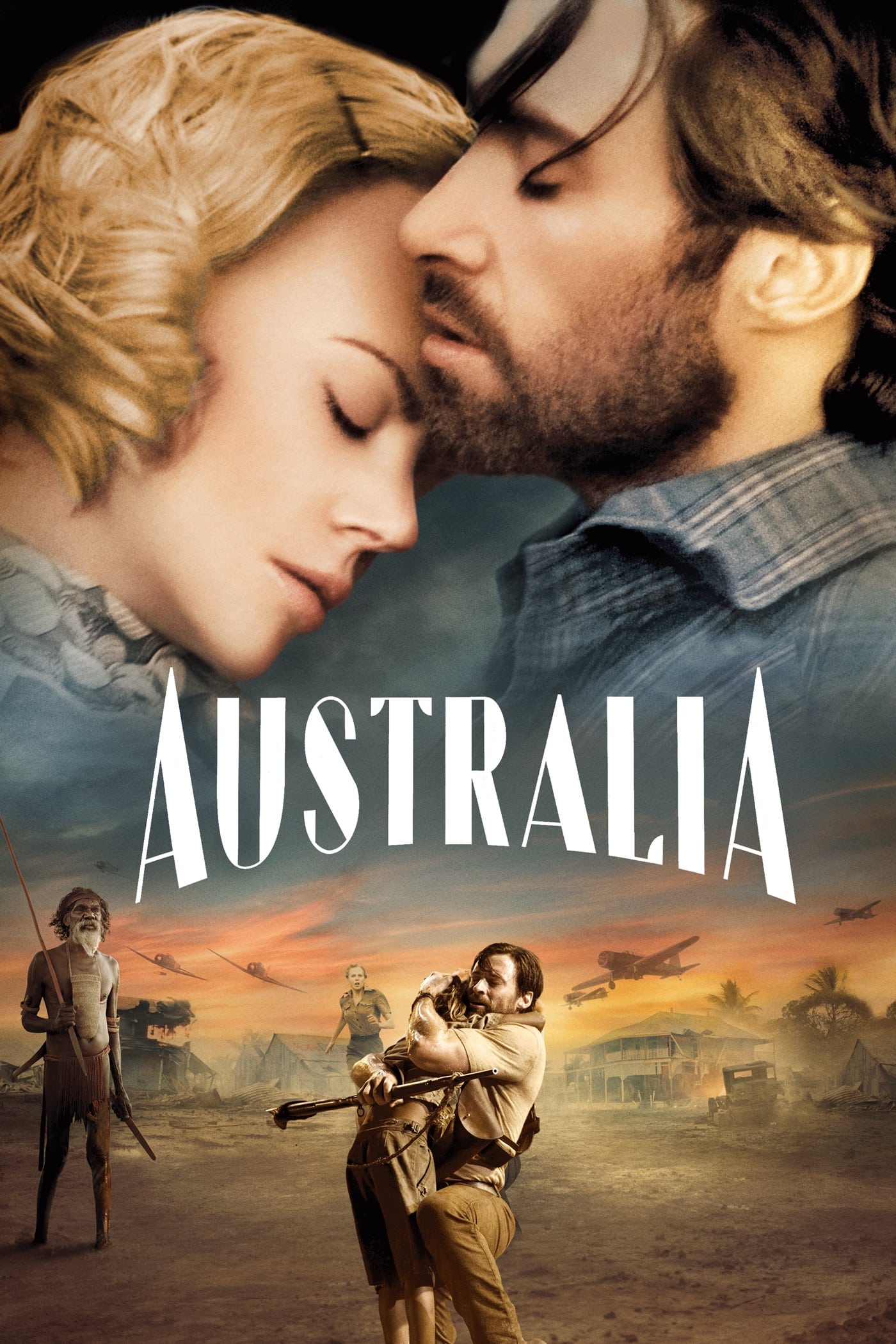
Set in northern Australia before World War II, an English aristocrat who inherits a sprawling ranch reluctantly pacts with a stock-man in order to protect her new property from a takeover plot. As the pair drive 2,000 head of cattle over unforgiving landscape, they experience the bombing of Darwin by Japanese forces firsthand.
16 May Australia (2008)
The Story
There’s plenty of space for others to comment on how wrong the shape of this is, and whether Nichole is too wooden. Talk like that is boring to me. I enjoyed it in spite of it working hard against success.
One reason is that I know cattle drive westerns well. Its not only a genre by itself in the US, but it spawned a whole TeeVee fad in the sixties where half of the shows in prime time were on the cattle drive trail. Because I know the scope of the American movies, the much larger scope of Australia, the massive oversizing is simply awesome. Its bigger and richer and therefore in an intriguing way inherits all we have stored about “the west” in film terms and made it fresh again simply by scale.
And Baz knows how to show scale, with amazing high shots. Simply amazing. There is nothing like this zooming high he does.
But, since you are reading Tedg, you know there will be a folding comment.
Baz uses folding in several ways. First, as noted, he folds other genres. He’s done that in every film, adopting and referencing types in order to make things richer. Here he leverages the cattle drive western, the “war movie that separates and reunites lovers,“ and the “missionaries and kids in peril” genres. Its mannered, but its there.
More interesting are two other techniques he has used before. The first has to do with singing. Its overdone I think, but its a sweet concept of mapping Oz to Australia, western song to native lucid dreamwalking, and comflicting notions of home. This fold is doubly folded into the film within a film notion of Oz within Australia, down to the throwing away of shoes at the fourth ending when our boy finds his home.
The second is more subtle, and is sort of a Baz tradition already. He likes to play with the notion of telling a story so that after a certain point, everything you see is a story told by someone introduced in the movie as a storyteller. So he starts with the narrator (the boy) telling us. This frames it. But then he has Nichole’s character tell one that could be the whole movie. And he introduces the Aboriginal mystic who has three points where what follows could be his story. The screening of Oz could be what follows.
As the cattle drive crosses the desert (which naturally no one has ever done and lived) we have reports by witnesses that they have seen every human and animal dead. Then in 20 seconds they appear in town. Clearly, Baz meant the dying, parched vision of Drover to be what we see after, sort of “last temptation of Christ” wise. Oh yes, the Jesus thing works in there too. We are missing an absinth vision this time, but all else is there, nested within. This is the child of “My Brilliant Career.”
Posted in 2008
Ted’s Evaluation — 2 of 3: Has some interesting elements.


No Comments